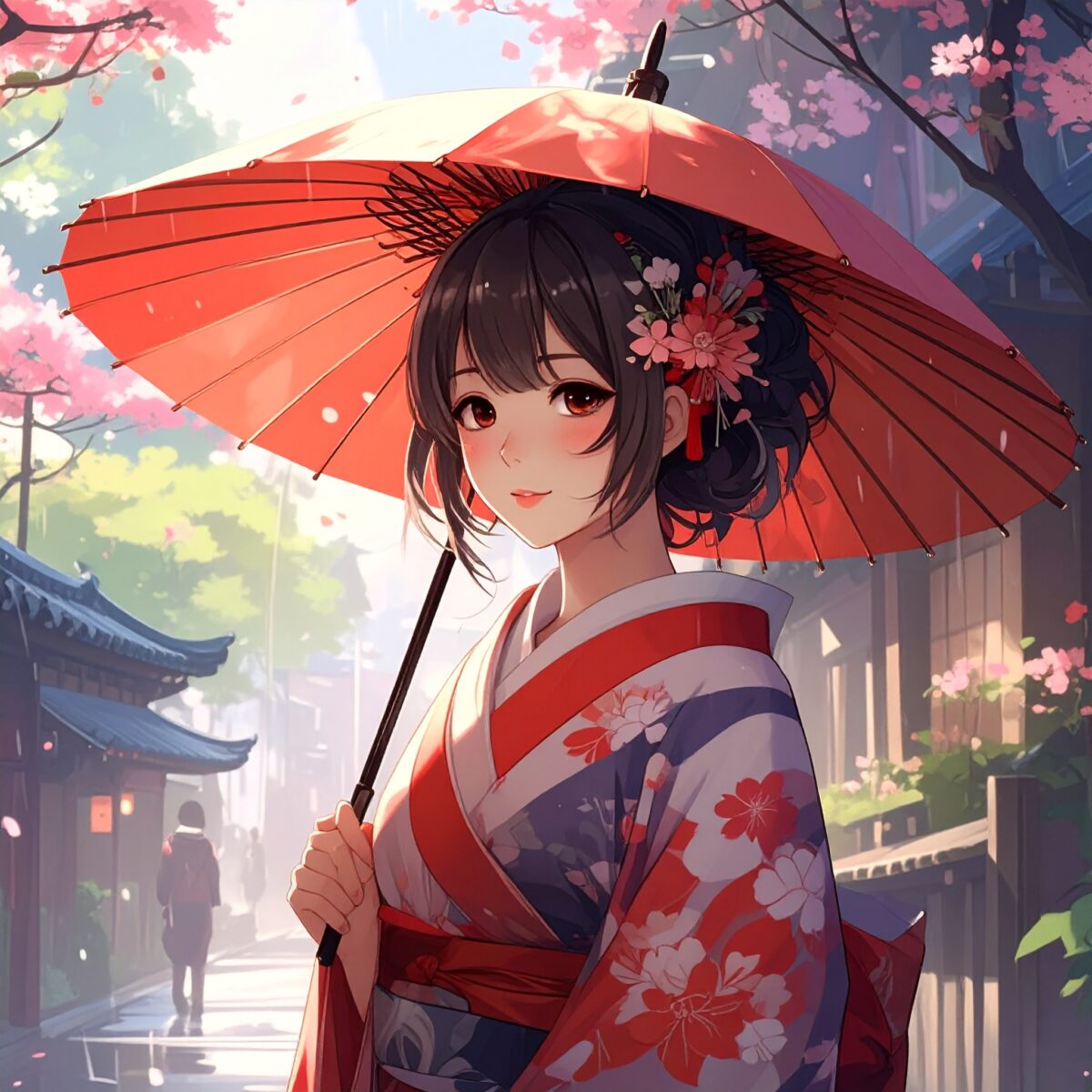In the gentle patter of rain, a traditional umbrella opens quietly. The arc of washi paper stretched over bamboo ribs softly envelops the air—like a scene from a painted scroll come to life. This is the magic of the wagasa, the traditional Japanese umbrella. More than just protection from rain, it is a refined expression of Japanese aesthetics and a reflection of how the people of Japan relate to nature. Experiencing the inner workings of a wagasa firsthand offers a unique opportunity to rethink how we engage with rain.
This cultural program begins with an introduction to the history and varieties of wagasa. From bangasa (sturdy everyday umbrellas) to janomegasa (with elegant eye patterns), maigasa (for dance), and higasa (sunshades), participants learn about the different purposes and forms, revealing the diverse world behind what may seem like a simple object. Crafted entirely from natural materials—bamboo, washi paper, cotton thread, and lacquer—a single wagasa is the result of countless hands and traditional techniques.
One highlight of the experience is exploring the umbrella’s internal framework. Delicate bamboo ribs, split finely and spread out in a radial form, showcase brilliant structural design that distributes tension evenly for smooth opening and closing. Guests can try moving the ribs themselves or tying them with thread, learning how strength and flexibility coexist in wagasa construction to resist both rain and wind.
At first glance, the design may appear simple. Yet even the slightest misalignment of the ribs can prevent the umbrella from opening properly. Through this hands-on experience, participants come to appreciate how the seamless elegance of a fully opened wagasa is the result of precise, thoughtful craftsmanship. From the way tools are handled, to the pressure of the hands, to the natural bend of bamboo—each detail reflects the subtle sensitivity of the artisan’s skill.

At the workshops and museums where the wagasa experiences take place, visitors are often treated to live demonstrations by skilled artisans. Watching the fluid motion of their hands and the precision of their tools, one can’t help but be captivated. Even witnessing just a small part of the process—though the creation of a single umbrella takes several days—offers a profound appreciation for the depth and weight of traditional craftsmanship.
For those interested, programs often include the opportunity to paint or dye a plain umbrella, turning it into a one-of-a-kind creation. Using pigments or traditional dyes, participants can design their own patterns, engaging with a uniquely Japanese sense of beauty that blends utility and decoration. These umbrellas are not merely souvenirs—they can be used in daily life, serving as a lasting memory of the journey and a functional part of one’s lifestyle.
Multilingual guides and cultural explanations are thoughtfully prepared for international guests, highlighting that wagasa is not just a historical object but a modern embodiment of the Japanese philosophy of “function and beauty in harmony.” In this tradition, rain is not seen as a nuisance but as a sensory moment to be embraced. The wagasa represents this sensibility—transforming rainy days into opportunities for reflection and elegance.
Touching the framework of a wagasa is more than just learning its mechanics—it’s an invitation to understand how the Japanese have long interacted with nature. The umbrella is carried because it rains, but within that necessity lies centuries of thoughtful design and aesthetic care. The wagasa stands as a symbol of Japanese lifestyle and cultural refinement.
Beneath the canopy of a wagasa lies a network of delicate yet sturdy bamboo ribs. To feel their structure, their tension and texture, is to encounter a quiet, enduring artistry. After such an experience, one may find themselves looking forward to rainy days, with a subtle smile and a deeper connection to Japan.




